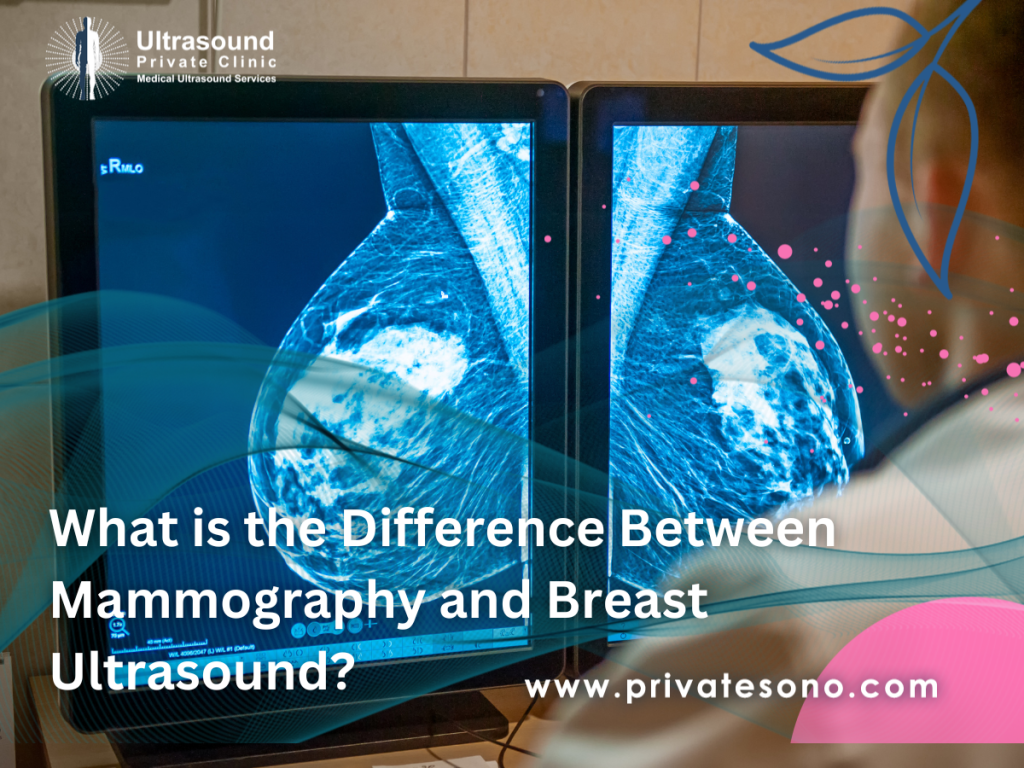Mammography and breast ultrasound are two important breast imaging tests used to detect and diagnose breast health issues. While both tests involve a scan of the breast, they are different types of scans. In this blog, we will explain the difference between mammography and breast ultrasound, and provide answers to some frequently asked questions about one breast scan.
What is a Mammogram?
A mammogram is an X-ray exam of the breast. The exam is done by a specially trained technician or radiologist, who takes pictures of the breast from different angles. The pictures are then checked for any abnormalities or signs of cancer. Mammograms can help detect breast cancer in its early stages and can be used for screening and diagnosis.
What is a Breast Ultrasound?
A breast ultrasound is an imaging test used to examine the breast tissue. The test uses sound waves to create a picture of the breast tissue. It is usually used to help diagnose an abnormality seen on a mammogram. Ultrasounds can help to differentiate between a solid mass and a fluid-filled cyst, which can help with diagnosis. It can also be used to diagnose benign lesions and to guide biopsies.

What is the Difference Between Mammography and Breast Ultrasound?
Mammography and breast ultrasound are used for different purposes. Mammography is used to screen for breast cancer and to diagnose suspicious lumps or masses. Breast ultrasound is used to help diagnose an abnormality seen on a mammogram, or to help guide a biopsy. Both tests involve a scan of the breast, but the type of scan is different. Mammography uses X-rays to create an image of the breast, while ultrasound uses sound waves to create an image of the breast tissue.

Conclusion:
Mammography and breast ultrasound are two important breast imaging tests used to detect and diagnose breast health issues. Mammography is used to screen for breast cancer and to diagnose suspicious lumps or masses, while ultrasound is used to help diagnose an abnormality seen on a mammogram or to help guide a biopsy. It is important to talk to your doctor about which test is right for you.
FAQs & Answers
Q: What is a mammogram?
A: A mammogram is an X-ray exam of the breast. The exam is done by a specially trained technician or radiologist, who takes pictures of the breast from different angles. The pictures are then checked for any abnormalities or signs of cancer.
Q: What is a breast ultrasound?
A: A breast ultrasound is an imaging test used to examine the breast tissue. The test uses sound waves to create a picture of the breast tissue. It is usually used to help diagnose an abnormality seen on a mammogram.
Q: What is the difference between mammography and breast ultrasound?
A: Mammography and breast ultrasound are used for different purposes. Mammography is used to screen for breast cancer and to diagnose suspicious lumps or masses. Breast ultrasound is used to help diagnose an abnormality seen on a mammogram, or to help guide a biopsy. Both tests involve a scan of the breast, but the type of scan is different. Mammography uses X-rays to create an image of the breast, while ultrasound uses sound waves to create an image of the breast tissue.
Q: How often should I get a mammogram?
A: The frequency of mammograms depends on your age and risk factors. It is important to talk to your doctor about your individual risk factors and the recommended frequency of mammograms.
Q: Can a mammogram detect breast cancer?
A: Yes, a mammogram can detect breast cancer in its early stages. It is an important tool for early detection and diagnosis of breast cancer.
Q: Is a mammogram painful?
A: Mammograms can be uncomfortable, but they are not usually painful. The pressure of the X-ray machine can be uncomfortable, but the procedure is usually quick.
Q: Can I get a mammogram and a breast ultrasound at the same time?
A: Yes, it is possible to get a mammogram and a breast ultrasound at the same time. Your doctor may recommend both tests to get a better picture of your breast health.

